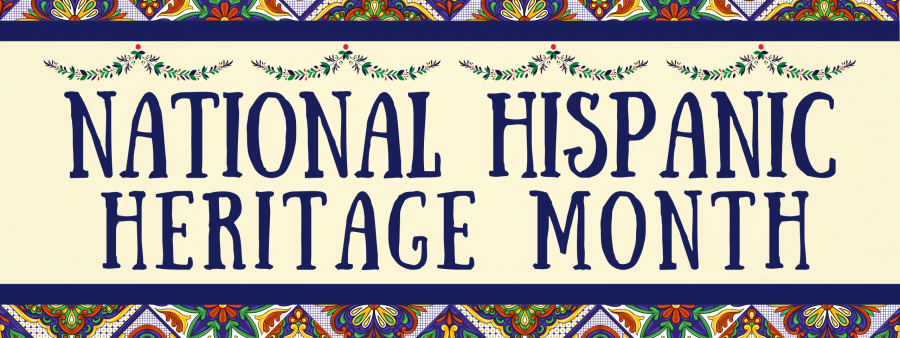
¡Hola!
My name is Gabriel Jesus Escobedo, but most people here at Michigan Tech call me Gabe. I am originally from Texas and identify as a Tejano. This is my first year as the Director of the Center for Diversity and Inclusion. I am also a PhD candidate studying Anthropology of Performing Arts and Dance with a minor in Latino Studies at Indiana University. The focus of my research is the intersectionality of dance and identity among US Latine youth. Just a few more chapters left and I will be Dr. Gabe.
Hispanic, Latinx, or Latine culture, despite being unified by the Spanish language, is a medley of food, history, customs, politics, geography, climate, and many other characteristics. Even the Spanish language has significant variation given that 20 countries along with one territory of the United States have Spanish as their primary language (17 separate words for “popcorn” exist in Spanish!).
In this context, generalizations are tricky. Latine foods have some distinctive characteristics, with rich and complex flavors, sometimes tending towards being spicy or “picante.” However, much of Latine cuisine is mild. Music, modern and traditional dance, and extended family are a few common cultural elements, but even here, significant variations exist.
I invite the Michigan Tech community to learn more about Latine culture through National Hispanic Heritage Month, which begins September 15 and ends on October 15. I have gathered a few movies, books, and recipes for you to share with your familia and friends as you make your way through this heritage month and beyond.
Latine Movies
Many movies exist that showcase experiences and stories from South and Latin America as well as those of Latine identity in the United States. Streaming platforms will no doubt have a few movies and shows to check out this Hispanic Heritage Month, but here are a few more you should add to your list.
Which Way Home (2009), Rebecca Cammisa
A feature documentary film that follows unaccompanied child migrants on their journey through Mexico as they try to reach the United States.
Real Women Have Curves (2002), Patricia Cardoso
In East Los Angeles, an 18-year-old struggles between her ambitions of going to college and the desires of her domineering mother for her to get married, have children, and oversee the small, rundown family-owned textile factory.
También la lluvia (Even the Rain) (2010), Icíar Bollaín
Follows two filmmakers in Bolivia about the conquest in the aftermath of Christopher Columbus’ journeys and mirroring the treatment of indigenous peoples of the past with those in the present as the Cochabamba protests erupt regarding the privatization of water.
City of Gold (2018), Harry Locke IV
A self-destructive masochist seeks refuge in the jungles of Peru with his former lover, who is pursuing the life of a reclusive artist.
The Motorcycle Diaries (2004), Walter Salles
A rendition of the classic book about a twenty-three year old medical student, Ernesto Guevara de la Serna, later known as Che Guevara, on his 8,000 km motorcycle trip from Buenos Aires to Venezuela.

About the Author
Gabriel Jesus Escobedo
Interest Areas
- Latine Art and Dance
- Making Music
- Student belonging and success
Latine Books
These books are a few recommendations by Latinx members of the Michigan Tech community. They include fiction and non-fiction works. We recognize that we cannot express all the various Latine identities and works here. Consider this list as as a starting point!
The Poet X, Elizabeth Acevedo
Written entirely in verse, a young girl growing up in Harlem finds herself questioning her Catholic faith and the world around her.
Bless Me, Ultima, Rudolfo Anaya
Perhaps the most widely read novel in the Chicano literary canon about a young boy whose life is changed when a curandera (medicine woman or spiritual healer) enters his life.
Our America: A Hispanic History of the United States, Felipe Fernández-Armesto
Sweeping aside the premise that America’s history began with the first English settlers in Jamestown and, instead, tracing America’s beginnings through its Hispanic/Latinx past.
Inventing Latinos: A New Story of American Racism, Laura Gómez
An interrogation on the how and why Latinx identity became a distinctive racial identity.
Latine Recipe
Tres Leches Cake
Tres Leches, or Three Milk cake, is a staple that you may find at almost every Mexican restaurant. Normally made with evaporated milk, condensed milk, and cream, this iconic dish is easy to make and easier to share with friends and family.
Ingredients
- 3 cups flour
- 1 tsp baking powder
- 1/2 tbsp salt
- 4 eggs
- 1 cup sugar
- 1 cup milk
- 2 tbsp vanilla
- 1 can heavy cream
- 1/2 can evaporated milk
- 1/2 can condensed milk
- 1 tsp cinnamon powder
- 1 tsp nutmeg powder
Directions
- In a large bowl, add the flour, baking powder, and salt, and mix.
- Take a separate bowl and pour in the four egg yolks. Add the sugar and vanilla to the mixture. Whisk it until it is mixed completely. Keep the egg whites separate for use later in the recipe.
- Pour in the liquid mixture into the dry ingredients bowl and gently combine to form your cake batter.
- Take a third bowl, put in the egg whites, then add sugar and whisk until stiff peaks are formed.
- Mix the egg whites into the batter and gently fold it in to combine. Remember not to mix vigorously, but gently fold it in.
- Take a cake tin and pour in the mixture and bake for 25-30 minutes.
- While the cake is baking, you will need to make the milk mixture that the cake will soak in once it is done. For this, you will need to combine the evaporated milk with the condensed milk and keep aside.
- Once the cake is baked, keep it aside to cool for about an hour.
- After the cake has fully cooled down, poke holes all over the cake with a toothpick and pour the milk mixture. Ideally, you should keep the cake in this mixture overnight. In case that is not possible, try soaking the cake for at least 2-3 hours.
- Before serving, spread sweetened whipped cream on top. The Nestle Media Crema Table Cream is a great option. Sprinkle in some cinnamon and nutmeg powder on top to get that extra oomph in flavor.
Credit: AmigosFood